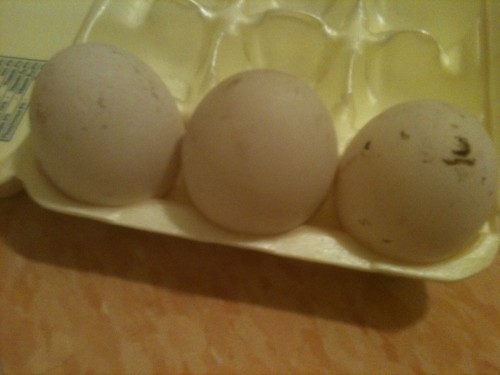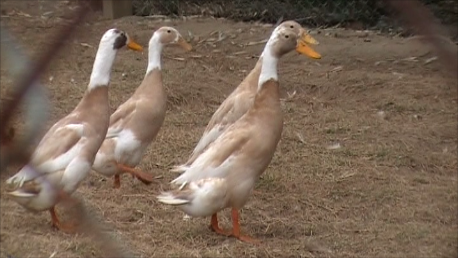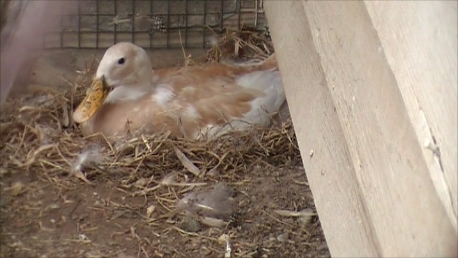
Huey, Louie and Dewey, our soon-to-be Runner Ducklings!
Though they look rather funny when they walk or run, our Runner Ducks are the perfect barnyard pet! These upright-walking ducks are taller than most of their feathered cousins and their legs are set back further towards their tail, to allow them to have such great posture. Rather than “duck walk” or waddle like most ducks, they have been bred to run. Native to islands near India, these birds were originally bred and used to weed rice paddies. They would be walked in flocks to the waterlogged paddies and would spend most of their time weeding plants from the rice crop and eating the occasional insect. Primarily vegetarian, these birds are terrific homestead birds, as they graze constantly and will patrol your yard, weeding your lawn and garden.

They lay over 200 eggs a year, which are a great alternative to chicken eggs, but are sometimes trickier to collect. Runner ducks seldom stop and nest their eggs, and tend to lay them on the run — literally. You have to collect them before hungry foxes and other wild animals can get to them first. Female runner ducks grow to be slightly taller than their male counterparts, with a height of close to 26 inches tall, while the males reach about 20 inches tall. Prolific in their breeding, a pair can multiply into a large flock in no time! Females are louder than males and actually produce a resounding “quack” while their mates don’t make much more than a hiss or whisper.

A great source of protein as well, the runner duck makes a delicious meal. Because they forage, you may need to supplement their diet with grain or other pellet feed, but it’s a terrifically healthy, free range meat for your dinner table. We have a small flock here on the farm that we love because they look so darned funny when they run, and we’ve been collecting their eggs for incubation for a friend. For proper incubation, it’s best to have an electric incubator that will keep the temperature at 99.5 degrees Fahrenheit with 60% moisture for about 28 days. Our incubator actually simulates the mother duck by turning it periodically so that the unborn chicks don’t stick to the inside of the egg shells.
